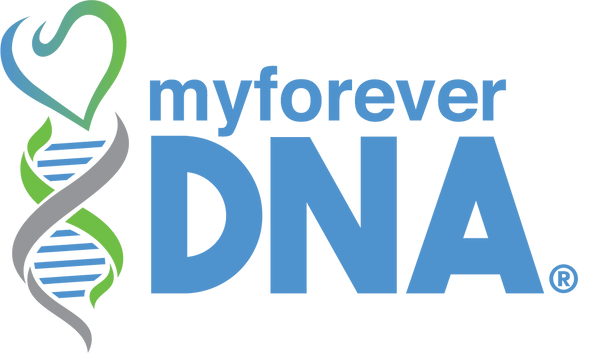
How to Understand Your Paternity DNA Test Results
Note: This is a paternity test results example and is not your actual DNA test results. It is provided solely as a guide to help you understand how to read and interpret a paternity test report.
Your wait is finally over, and you have now received your Paternity DNA Test Results. While this moment often brings relief and anticipation, it is also a deeply personal and sometimes emotional experience. However, interpreting the report can quickly become challenging, especially because it contains specialized legal and scientific terms that may not be familiar to most people.
That is exactly why, at My Forever DNA, we work diligently to make the entire process as clear, accurate, and stress-free as possible. Therefore, in this guide, we will walk you step-by-step through each section of your paternity test results so that you can easily follow along. As a result, you will not only gain a complete understanding of every detail but also maintain the highest level of privacy and peace of mind throughout the process.
Overview of Paternity Test Results
Your paternity DNA test report contains several key sections, each providing crucial information:

- Report ID
- Identifying Information
- Conclusions
- Marker/Allele Size Data Table
- Statistics
- Verification(s)
- Order ID
1. Report ID
This unique case number is assigned by our laboratory, and as a result, it ensures your results are linked only to your specific test. In addition, it plays a vital role in safeguarding your privacy throughout the entire testing process.
2. Identifying Information
In this section, you will find several important details that help identify and organize your test:
- Collection date - This shows the exact date when the DNA samples were taken.
- Case ID - This number matches the Report ID and ends in AF for the alleged father or C for the child, making it easy to distinguish between participants.
- Relationship status - This specifies whether the person tested is the alleged father or the child.
- Sample type - This indicates the kind of sample collected, such as a cheek swab, hair, toothbrush, or other accepted items.
- Race - This is marked on the sample envelope. If left blank, it defaults to “Caucasian.” However, this default does not affect the accuracy of the results.
By organizing the information in this way, the laboratory can more quickly retrieve records, ensure accurate matching of samples, and maintain precise record-keeping throughout the process.
3. Conclusions
In this section, the report will clearly state one of two possible outcomes.
“Cannot be excluded as the biological father” - This means the alleged father IS the biological father.
“Is excluded from paternity” - This means the alleged father IS NOT the biological father.

4. Marker/Allele Size Data Table
In this part of the report, our partnered laboratory carefully analyzes 24 specific DNA locations known as markers (also called loci) for each person in the paternity test. At each marker, we then examine two pieces of genetic information, called alleles.
Since a child inherits one allele from their mother and one from their father, comparing these alleles is absolutely essential for confirming or ruling out paternity. Therefore, understanding how to read this section will make the results much clearer.
To make it easy to follow:
- First, the 1AF column shows the two alleles from the alleged father.
- Next, the 1C column shows the two alleles from the child.
When we compare these columns, at least one of the child’s alleles should match one from the alleged father at most or all of the markers if he is the biological father. On the other hand, if there are multiple markers where neither allele matches, this strongly suggests that he is not the biological father.
However, sometimes a difference - called a mutation - occurs naturally in a marker. This does not automatically mean paternity is excluded. In fact, our trained analysts use advanced statistical methods to account for possible mutations before making the final conclusion. This ensures that results remain accurate even when small genetic variations are present.
Because of this detailed, step-by-step comparison, the results become not only clear and reliable but also easier to interpret especially when combined with the rest of the information in your report.
What’s the difference between loci, markers, and alleles?
- Locus (plural: loci) → This is the location or “address” on a chromosome where a specific piece of DNA is found. You can think of it like a street address for a gene.
- Marker → In paternity testing, a marker is a specific locus chosen by the lab because it varies from person to person. Since these differences are unique, they are excellent for identifying biological relationships. In everyday testing language, “marker” and “locus” are often used interchangeably.
- Allele → This is the actual genetic value found at a marker (locus). Every person has two alleles for each marker—one inherited from their mother and one from their father. In your paternity test table, these alleles appear as numbers in each person’s column.
By learning these terms, understanding how mutations are considered, and following the comparison process, you can confidently interpret the results in your paternity test report.
5. What is the Paternity Index (PI)?
The Paternity Index (PI) is a measurement that shows how likely the tested man is to be the child’s biological father compared to any random man. In other words, it expresses the statistical strength of the DNA evidence.
How it works:
- First, a PI is calculated for each individual DNA marker tested.
- Next, all of these PI values are multiplied together to produce what is called the Combined Paternity Index (CPI).
- Finally, the higher the CPI number, the stronger the evidence supporting paternity.
As a result, the Paternity Index is one of the most important factors in determining whether the tested man is indeed the child’s biological father.
6. Statistics
In this section, two numbers matter most when reviewing your results, and understanding them will help you interpret the report with confidence.
- Paternity Likelihood (Odds Ratio) - This figure represents the probability that the alleged father is the biological father compared to a random man of the same racial background. Therefore, a higher odds ratio provides stronger evidence of paternity.
-
Probability of Paternity - This is expressed as a percentage. For example:
- 0.00% means there is no biological father–child relationship.
- 99.99% or higher means the alleged father is confirmed as the biological father.
As a result, these statistics give you both the numerical likelihood and the percentage certainty, allowing you to clearly understand the strength of the DNA evidence.
6. Verification(s)
Every report undergoes multiple quality checks:
- Reviewed by the Chief Scientific Officer or Lab Director.
- Processed using dual testing to ensure precision.
- Legal cases are notarized for court use.
Even the PDF version, while not physically stamped, is officially signed and dated for authenticity.
7. Order ID
This number assigned by My Forever DNA matches your online order record for easy tracking.
Clarity Matters Just as Much as Accuracy
At My Forever DNA, we know your DNA test represents far more than numbers on a page it’s about real people, real families, and the life-changing answers you deserve. That’s why we deliver unmatched accuracy while offering real human support at every step.
If you feel unsure about any part of your report or if you simply want extra peace of mind reach out to us. Our caring team will walk you through your results and answer every question you have.
📧 Reply to the email from your dedicated DNA Specialist
📞 Call us at 402-800-7161 to speak directly with our friendly team
At My Forever DNA, you are never just a case number you are part of our ongoing commitment to provide results you can trust, explained with clarity and handled with unwavering respect for your privacy.
